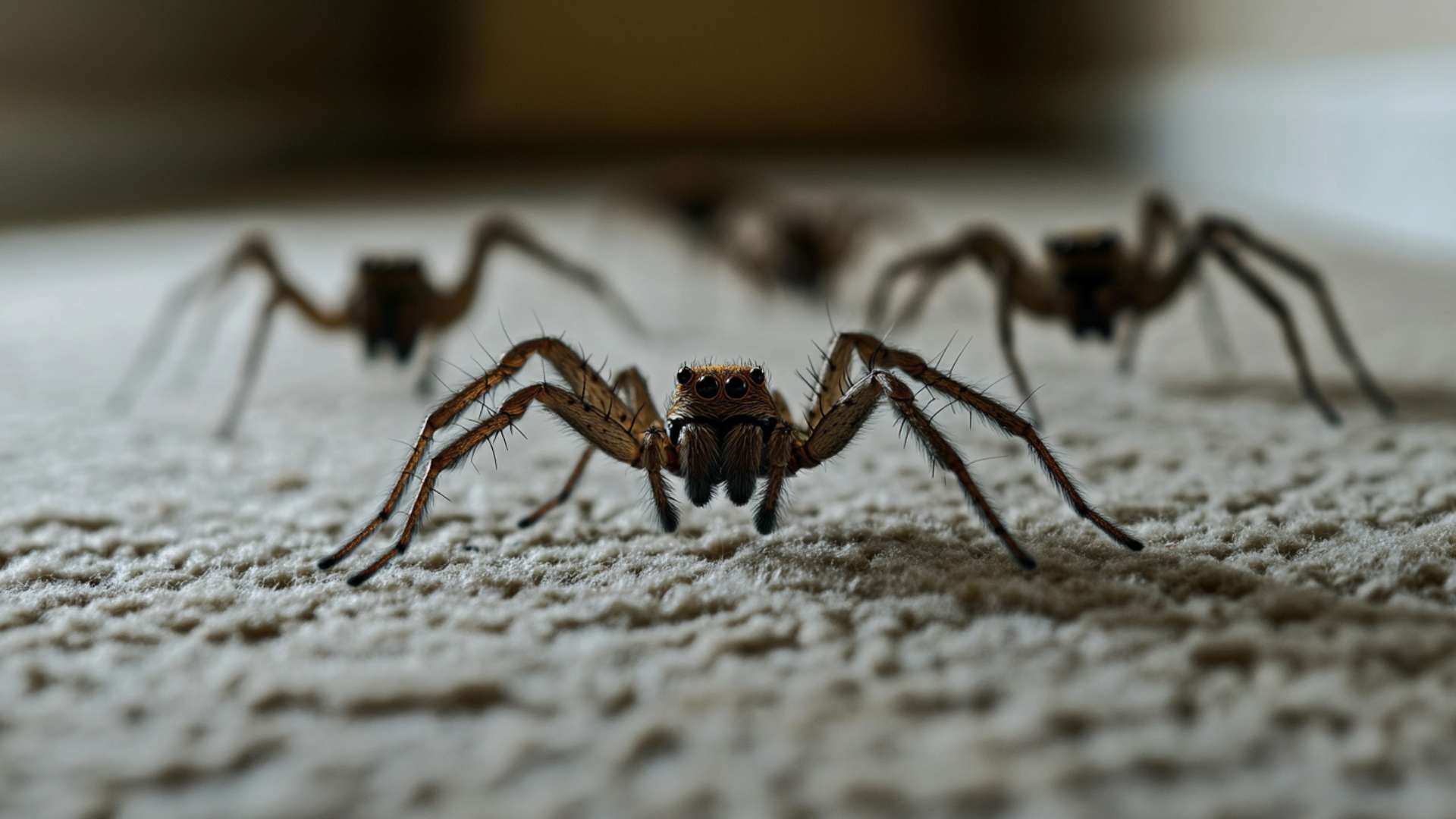Daddy longlegs and leg spiders, also known as cellar spiders, are intriguing creatures that often find their way into our homes or gardens. Despite their seemingly delicate appearance and thin legs, these arachnids can easily capture our attention. In this article, we will explore the fascinating world of daddy long leg spiders and uncover the truth behind some common misconceptions surrounding them.
Brief Overview of Daddy Long Leg Spiders
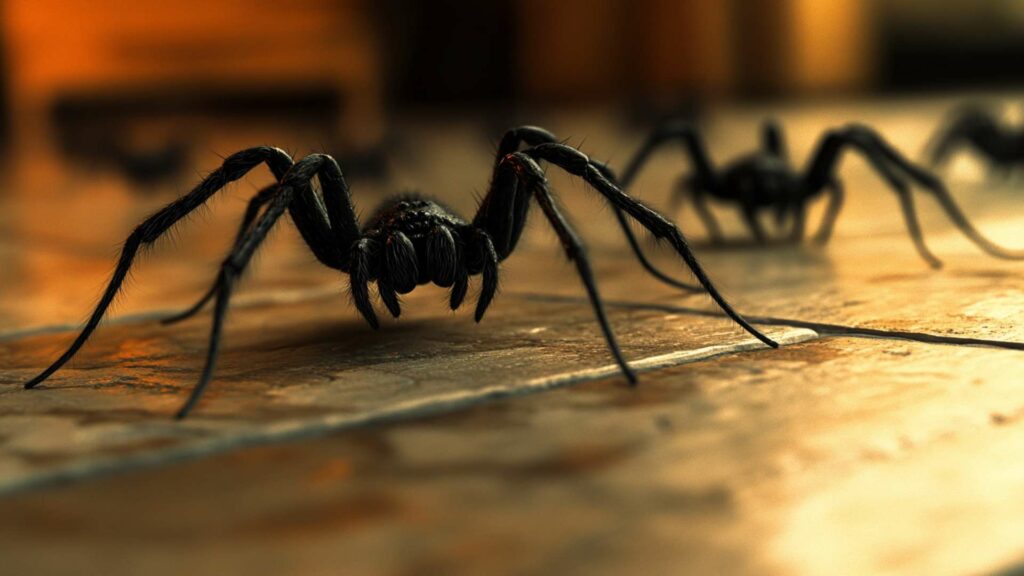
Daddy long leg spiders belong to the Pholcidae family and are commonly referred to as cellar spider spiders due to their tendency to be found in dark, damp places like basements or crawl spaces. They are characterized by their small bodies and exceptionally long legs, which can extend up to three times their body length. These eight-legged creatures have a distinctly unique appearance that distinguishes them from other common spider species.
Common Misconceptions about Daddy Long Legs
One prevalent misconception about daddy long legs is that they are extremely venomous but unable to deliver a harmful bite. This belief has led many people to kill daddy long legs or to regard them as harmless allies in controlling other pest populations.
However, it’s important to set the record straight – daddy long legs do possess venom glands but lack fangs capable of penetrating human skin. Therefore, they pose no significant threat to humans or pets.
Another misconception arises when people mistake daddy long legs for another group of venomous spiders known as harvestmen. While both groups share a similar appearance with thin legs and elongated bodies, harvestmen actually belong to a different order called Opiliones and with eight legs are not true spiders.
Unlike true daddy long leg spiders that produce silk and spin webs for trapping prey, harvestmen rely on scavenging for food without using silk-producing organs. So now that we have dispelled a couple of myths surrounding daddy long leg spiders let’s delve deeper into understanding these intriguing creatures and explore effective methods to get rid of them from your living spaces or gardens.
Description and Characteristics of Daddy Long Leg Spiders
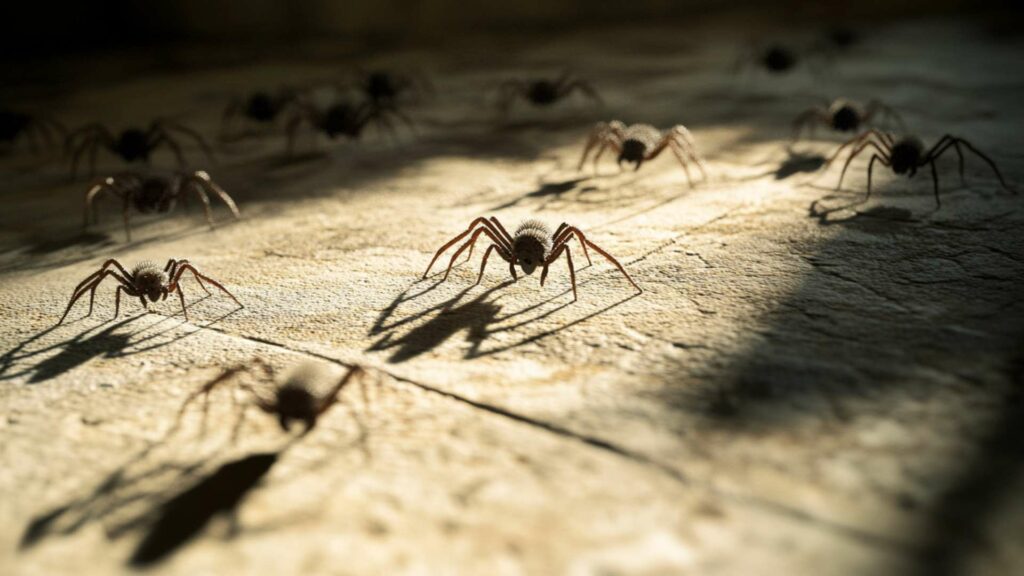
Daddy long leg spiders, also known as cellar spiders or harvestmen, belong to the arachnid family. Despite their name, these creatures aren’t actually true spiders but are closely related. One of the most distinguishing features of the daddy long legs spider is their unique body structure.
They possess a small, rounded body that is typically light brown or grayish in color. However, what truly sets them apart are their extraordinarily long and slender legs.
Unlike other spiders that have eight eyes arranged in two rows, daddy long leg spiders have only a single pair of eyes. These eyes are quite small and do not provide them with great vision; instead, they rely heavily on touch and vibration detection through their sensitive leg hairs.
Habitat Preferences and Behavior Patterns
Daddy long leg spiders can be found in a variety of habitats worldwide. They tend to prefer dark and damp environments such as basements, crawl spaces, garages, sheds, or attics where they can remain undisturbed.
They are commonly spotted hiding in corners or lurking around door frames. These spiders aren’t aggressive by nature and typically try to avoid human contact whenever possible.
They primarily feed on small insects like flies or mosquitoes that they catch using their silk-producing spinnerets to create tangled webs for trapping prey. Daddy long legs’ behavior is largely nocturnal – they become more active during the night when hunting for food sources becomes easier due to reduced visibility for both predators and prey alike.
During the day, they often retreat to secluded areas such as cracks in walls or stone piles where they can remain hidden from potential threats. Understanding the description and characteristics of daddy long leg spiders helps us grasp their physical attributes while comprehending their habitat preferences sheds light on why we may find them dwelling in certain areas of our homes or gardens.
Reasons to Get Rid of Daddy Long Leg Spiders
Potential health risks associated with daddy long legs
Daddy long leg spiders, although not considered venomous to humans, can still bite humans and still pose certain health risks. While their fangs are typically too short and weak to penetrate human skin, it’s important to note that some people may be allergic to their bites. These allergic reactions can range from mild itching and redness to more severe symptoms such as swelling or difficulty breathing.
Additionally, the presence of daddy long leg spiders in your home could contribute to respiratory problems for individuals suffering from asthma or allergies. Therefore, it is crucial to address their invasion promptly.
Damage caused by their presence in homes or gardens
Daddy long leg spiders have a tendency to build messy cobwebs in various areas around the house or garden. These webs not only create an unsightly appearance but can also become a nuisance when they accumulate on furniture, ceilings, or windows.
Walking into these webs can be quite bothersome as well. Moreover, if left unchecked, insect eggs from these spiders can multiply rapidly and establish a large population within your living space.
This can lead to more significant pest problems since the daddy long legs tend to feed on other insects like small flies or mosquitoes—thus attracting additional pests into your home or garden. In addition to the aesthetic issues and potential pest problem escalation mentioned above, daddy long leg spiders may also cause damage by invading food storage areas.
If they manage to reach your pantry or kitchen cabinets where food items are stored, they might contaminate them with their excrement or debris from their webs. This contamination poses a risk for bacterial growth and the transmission of diseases through the consumption of tainted food products.
To maintain a clean and healthy environment while safeguarding your property’s integrity, it is essential to take appropriate measures and learn how to properly get rid of daddy long leg spiders. Remember, even though they are not the most poisonous spiders and their bites are rarely harmful to humans, it is best to address their presence promptly to prevent any potential health risks or damage they may cause.
Natural Methods to Deter Daddy Long Leg Spiders
Removing clutter and reducing hiding spots

One effective way to discourage daddy long leg spiders from taking up residence in your home is by eliminating their preferred hiding spots. These crafty arachnids love to dwell in cluttered areas, so start by decluttering your living space. Clear out any piles of newspapers, boxes, or unused items that may serve as cozy havens for these eight-legged critters.
Pay special attention to corners and behind furniture where they often lurk unnoticed. Another step you can take is to keep your house clean and tidy.
Regularly vacuuming and dusting not only helps eliminate existing spider webs but also removes any tiny insects that might attract daddy long leg spiders as a food source. Furthermore, don’t forget to thoroughly clean beneath furniture and appliances where debris tends to accumulate.
Sealing cracks and gaps to prevent entry into the house
Daddy long leg spiders are masters of squeezing through even the tiniest openings in our homes, so it’s crucial to seal up any cracks or gaps they might exploit. Inspect your doors and windows for potential entry points and make sure they have proper weather stripping installed.
Additionally, check the exterior walls of your home for cracks or holes that could be inviting these agile creatures inside. Use a high-quality caulk or sealant to close off any openings you find along door frames, window sills, or utility pipes.
Using essential oils as a natural repellent
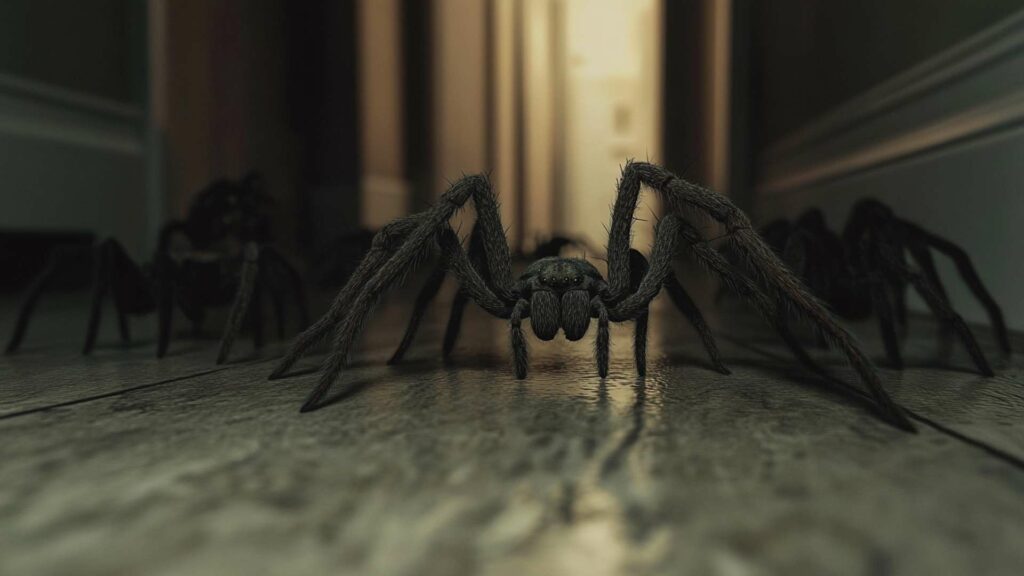
If you prefer natural alternatives for pest control, essential oils can be an excellent solution against daddy long leg spiders. Certain scents are highly repulsive to these arachnids due to their sensitive olfactory receptors.
Peppermint oil is particularly effective at repelling spiders due to its strong odor that they find displeasing. Mix 10-15 drops of peppermint oil with water in a spray bottle and generously spritz it in areas where you’ve seen spiders or suspect their presence.
Focus on corners, baseboards, and any other potential entry points. Additionally, you can try using other essential oils such as lavender, tea tree, or citrus oils known for their spider-deterring properties.
Experiment with different scents to find the one that works best for you. Remember, while these natural methods are often successful at deterring daddy long leg spiders, if your infestation persists or worsens, it may be necessary to explore additional control measures to ensure a spider-free environment in your home.
Chemical-Free Solutions for Daddy Long Leg Spider Control
Creating a Vinegar Spray to Repel Spiders
If you prefer to take a natural approach to eliminate daddy long leg spiders from your home, creating a vinegar spray can be an effective solution. The acidic nature of vinegar is known to repel these critters while also being safe for humans and pets.
To make your homemade vinegar spider repellent, simply combine equal parts white vinegar and water in a spray bottle. For added potency, you can also add a few drops of essential oils such as peppermint, tea tree, or lavender.
These scents are unpleasant for spiders and will steer them away from treated areas. Proper application techniques are key to maximizing the effectiveness of the vinegar spray.
Identify common entry points such as windowsills, door frames, or any cracks where daddy long legs might find their way into your home. Spray these areas generously and repeat the process every few days until you see a significant reduction in spider activity.
Biological Control Options for Daddy Long Legs
Introducing Natural Predators like Centipedes or Birds
A natural way to keep daddy long leg populations in check is by introducing their natural predators into your environment. Creatures like centipedes or birds have a voracious appetite for spiders, including daddy long legs. If you have centipedes in your area (the ones with lots of them attracts daddy long legs too!), consider creating an inviting habitat for them around your house or garden.
They are excellent hunters and will actively seek out spiders as prey. Additionally, attracting birds by setting up bird feeders or birdhouses can help control spider populations naturally.
Encouraging Beneficial Insects in Your Garden
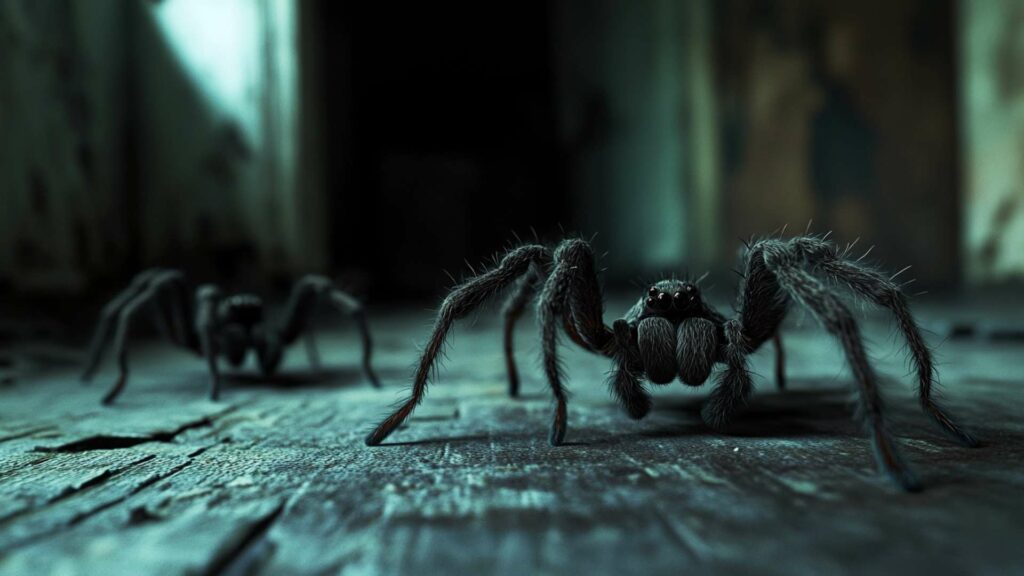
In your garden, allowing beneficial insects to thrive can help keep daddy long legs under control. Ladybugs, for example, are known to feast on various pests, including spiders.
Planting flowers and herbs that attract ladybugs, such as daisies or fennel, can create a welcoming environment for these helpful insects. Another option is to introduce nematodes into your soil.
These microscopic worms actively seek out spider eggs and larvae, effectively reducing the number of daddy long leg spiders in your garden. You can purchase nematodes online or at local gardening stores and follow the instructions for application.
Professional Pest Control for Daddy Long Leg Spiders
When to Consider Professional Assistance
If you’ve tried numerous methods without success or find yourself dealing with a severe infestation of daddy long leg spiders in your home, it may be time to consider professional pest control services. Pest control experts have the knowledge and experience to assess the situation accurately and determine the most suitable course of action.
Professional assistance is particularly recommended if you suspect other venomous spiders are present alongside daddy long legs. Venomous spiders pose potential health risks and should be handled by trained professionals who can safely eliminate them from your living space.
Choosing a Reputable Pest Control Company
When selecting a pest control company, it is crucial to choose one that is reputable and uses environmentally friendly practices. Look for companies with certifications in integrated pest management (IPM) as they prioritize non-toxic solutions whenever possible.
Seek recommendations from friends or neighbors who have dealt with similar issues and inquire about their experiences with different companies. Additionally, do some online research to read reviews and make an informed decision based on their track record in handling spider infestations.
Prevention Tips to Keep Daddy Long Legs Away
Regular Cleaning Routines and Maintenance Practices

Maintaining a clean and clutter-free environment is crucial in deterring daddy long leg spiders. Regularly vacuuming, dusting, and cleaning behind furniture will eliminate potential hiding spots for wolf spiders.
Pay special attention to corners, crevices, and dark areas where these spiders tend to gather. Furthermore, fixing any leaky faucets or pipes can help reduce the humidity levels in your home.
These humid areas attract daddy long legs as they prefer moister environments. By eliminating excess moisture, you make your home less appealing to these arachnids.
Implementing Effective Outdoor Landscaping Strategies
To prevent daddy long legs from making their way into your living space, focus on outdoor landscaping techniques that deter them. Remove any stone piles or excess vegetation near the house as they provide ideal hiding spots for these spiders. Additionally, consider spreading boric acid around the perimeter of your property.
This natural substance is harmless to humans but deadly to daddy long leg spiders and other insects. Be cautious when using boric acid if you have pets or children and follow the application instructions carefully.
Debunking Myths about Daddy Long Leg Spiders
Addressing Common Misconceptions Surrounding Their Venomousness
A prevalent myth surrounding daddy long leg spiders is their supposed extreme venomousness but inability to harm humans due to their fangs’ size. However, it’s important to note that daddy long legs spiders are not dangerous nor venomous pests towards humans. Their tiny fangs are unable to penetrate human skin effectively.
Dispelling Myths Related to Their Role in Controlling Other Pests
Contrary to popular belief, daddy long legs do not serve as effective pest control agents for other insects. While they do prey on smaller creatures like mosquitoes or gnats, their impact on reducing pest populations is minimal compared to other natural predators such as spiders or certain bird species. Understanding these misconceptions helps prevent unnecessary fear and allows you to focus on appropriate spider control methods without relying solely on the presence of daddy long legs.
Conclusion
Getting rid of daddy long leg spiders can be achieved through various chemical-free methods, biological control options, professional pest control services when necessary, and implementing prevention strategies. Creating a vinegar spray with essential oils helps repel spiders effectively while being safe for humans and pets. Introducing natural predators like centipedes or birds can help keep spider populations under control, and encouraging beneficial insects in your garden provides a natural balance.
Professional assistance should be sought if you find daddy long legs infestations are severe or venomous spiders are suspected. Preventive measures such as regular cleaning routines, fixing leaks, and implementing outdoor landscaping strategies all contribute to keeping daddy long legs at bay.
It’s essential to dispel myths surrounding their venomousness and role in controlling other pests so that effective solutions can be implemented without unnecessary fear. By adopting these strategies and maintaining a proactive approach towards spider control, you can create an environment that is less attractive to daddy long leg spiders while ensuring the comfort and safety of your home.
Master Spider Control with D-Termination: The Top Pest Control Choice in Las Vegas!
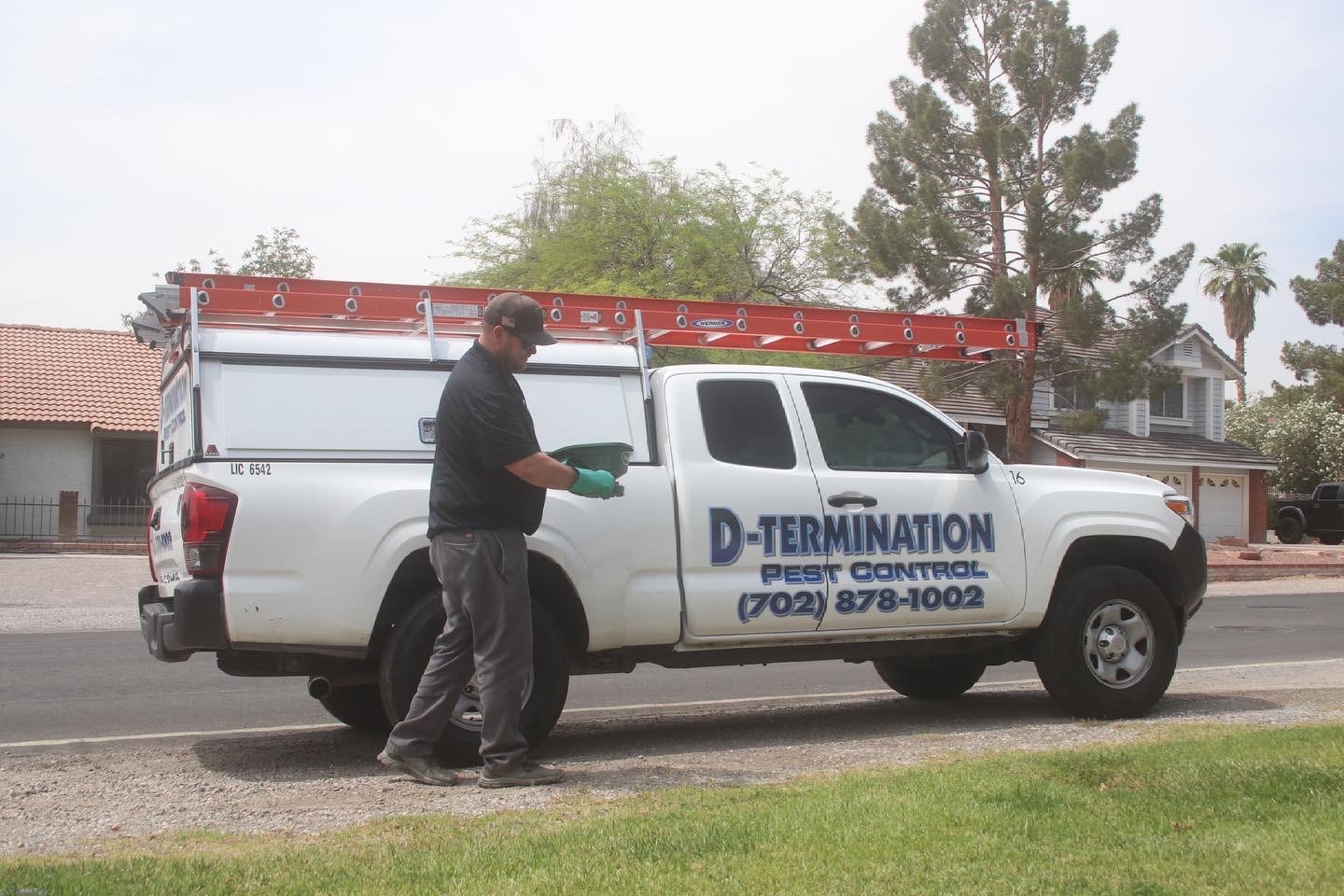
If you’re troubled by spiders in your Las Vegas property, turn to D-Termination for the solution. Our skilled team specializes in eradicating spider infestations, restoring peace and tranquility to your space. Bid farewell to spiders—opt for D-Termination’s effective pest control today!
Reach out to us at 702-919-6310 or visit dtermination.com to schedule your spider control service and regain your space from these unwanted pests.
Frequently Asked Questions:
Consistent cleaning and sealing entry points can help remove daddy long legs.
Natural remedies like essential oils or vinegar can help control daddy long legs.
Moisture and available prey might attract daddy long legs inside.
It’s not necessary to kill daddy long leg spiders; they are harmless and can help control other pests.

